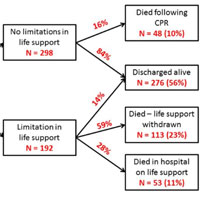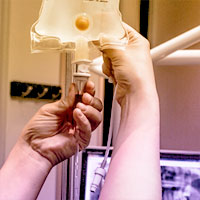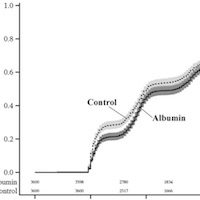Tag: ICU

Risk Factors for Avoidable Transfer to a Pediatric Trauma Center Among Patients Age Two Years and Older
Among injured children age two years and older, those with minor head injuries were at greatest risk for avoidable transfer. Many were transferred because of a perceived need for evaluation by a pediatric neurosurgeon. Future... read more
Worse outcomes with video laryngoscopy in ICU
When used in intensive care units, video laryngoscopy did not improve the chances of successful intubation on the first try, compared with direct laryngoscopy, and was associated with a significantly higher risk of severe... read more

Terlipressin for Septic Shock Patients
Catecholamines are commonly used in septic shock but face limitations of their hypo-responsiveness and adverse events due to high dose. Terlipressin is a synthetic vasopressin analog with greater selectivity for the V1-receptor.... read more

Age and Decisions to Limit Life Support for Patients with ALI
The purpose of this study was to estimate the association between patient age and the rate of new limitations in the use of life support, independent of daily organ dysfunction status, following acute lung injury (ALI) onset. 490... read more

Emergency Department Hyperoxia Associated with Increased Mortality in Mechanically Ventilated Patients
Emergency Department exposure to hyperoxia is common and associated with increased mortality in mechanically ventilated patients achieving normoxia after admission. This suggests that hyperoxia in the immediate post-intubation... read more

Moving Vulnerable Patients Around Hospital Can Increase Infections
Researchers at Overlook Medical Center released a report stating that transporting patients increases the risk of hospital-acquired infections. The study focused on ICU patients being treated for strokes, aneurysm ruptures... read more

qSOFA Performance Score as Prognostic Tool in Infected Patients Outside the ICU
A positive qSOFA score had high specificity outside the ICU in early detection of in-hospital mortality, acute organ dysfunction, and ICU admission, but low sensitivity may have limitations as a predictive tool for adverse... read more

Ideas for Future Intensive Care
Progress toward determining the true worth of ongoing practices or value of recent innovations can be glacially slow when we insist on following the conventional stepwise scientific pathway. Moreover, a widely accepted but... read more

Detection of Brain Activation in Unresponsive Patients with Acute Brain Injury
A dissociation between the absence of behavioral responses to motor commands and the evidence of brain activation in response to these commands in EEG recordings was found in 15% of patients in a consecutive series of patients... read more

Effect of an ICU Diary on PTSD Symptoms Among Patients Receiving Mechanical Ventilation
Keeping a diary for patients while they are in the intensive care unit (ICU) might reduce their posttraumatic stress disorder (PTSD) symptoms. Among 657 patients who were randomized completed the trial. At 3 months, significant... read more

Sedatives in Neurocritical Care
Extrapolating the findings from studies in the general ICU population suggests to reserve deep continuous sedation in the neuro-ICU for specific indications. Although an improved understanding of cerebral physiological changes... read more

Peripherally Inserted Central Catheters in the ICU
A retrospective study of adult medical patients in 52 hospitals. 27,289 patients with peripherally inserted central catheters placed during hospitalization. Peripherally inserted central catheter use in the ICU is highly... read more

Acute Kidney Injury in Postoperative Shock
Is hyperoncotic albumin administration an unrecognized resuscitation risk factor? The use of hyperoncotic albumin (HA) for shock resuscitation is controversial given concerns about its cost, effectiveness, and potential for... read more

ICU Patients May Understand Verbal Commands After Acute Brain Injury
A New England Journal of Medicine study shows 1 in 6 clinically unresponsive ICU patients show electroencephalography (EEG) patterns of brain activity when spoken to soon after acute brain injury. A dissociation between the... read more








